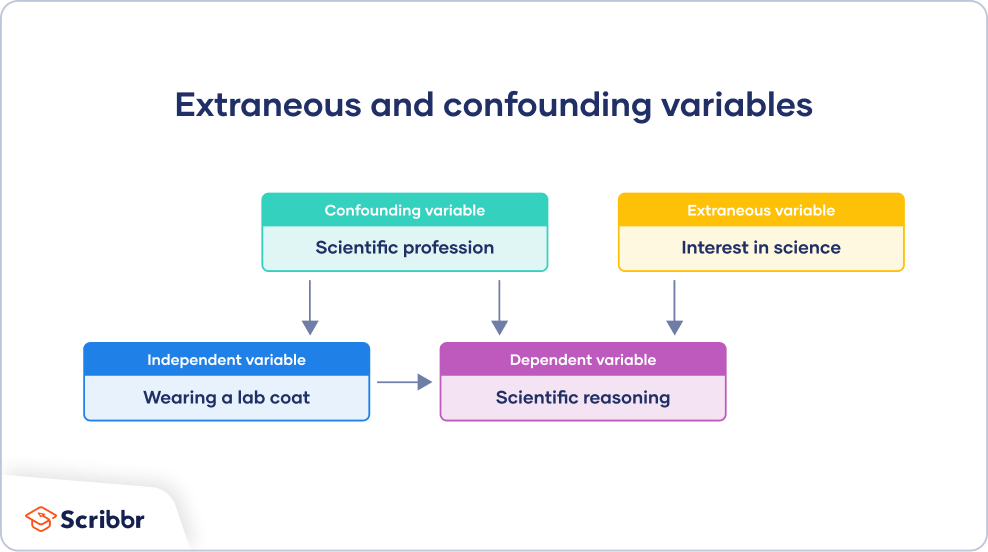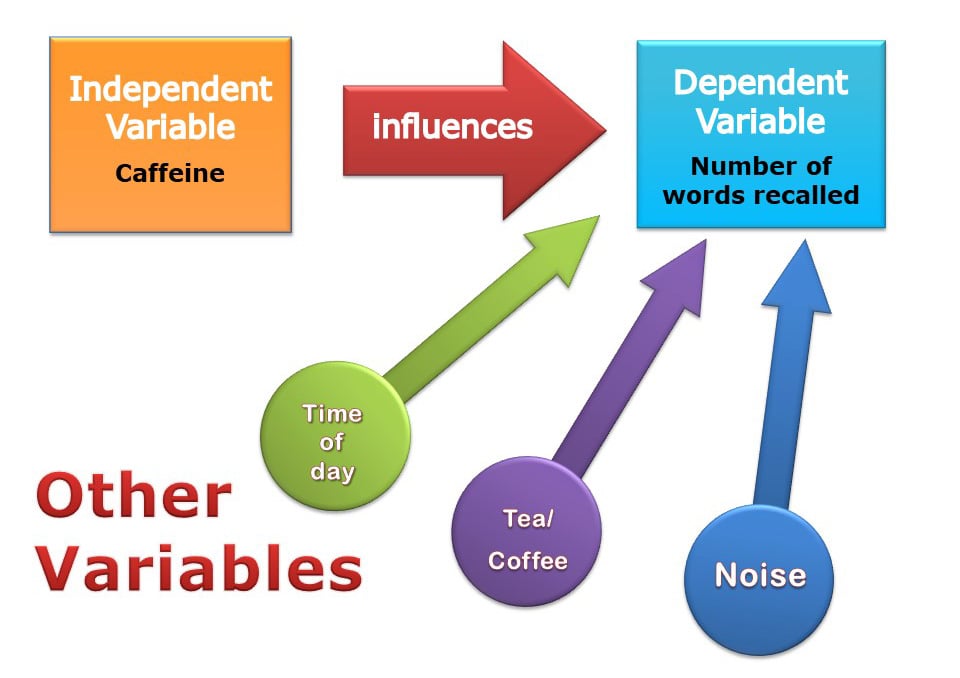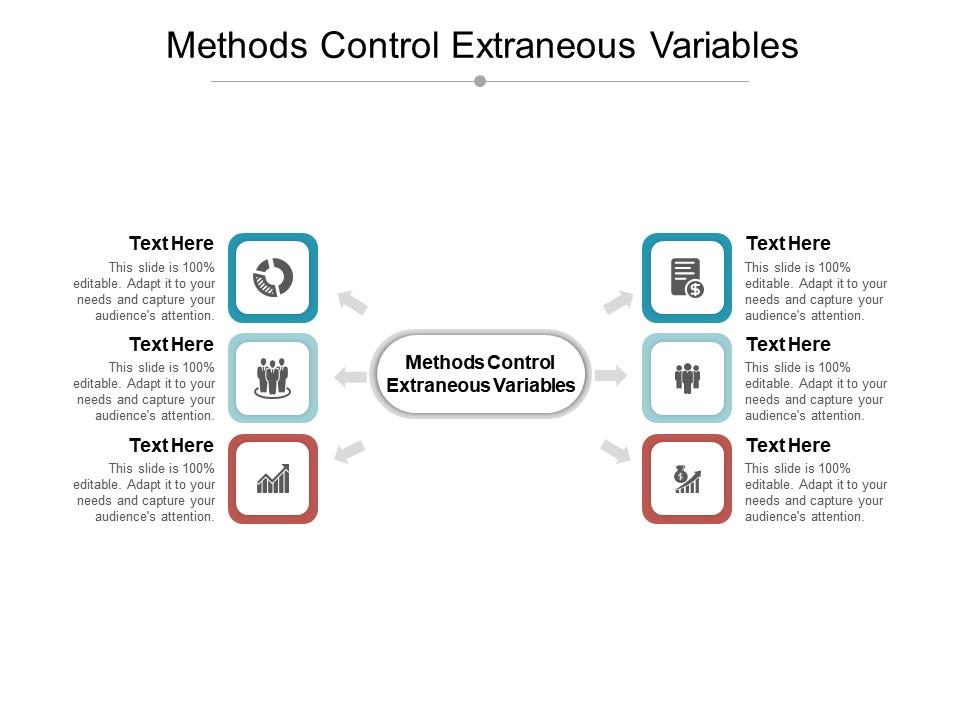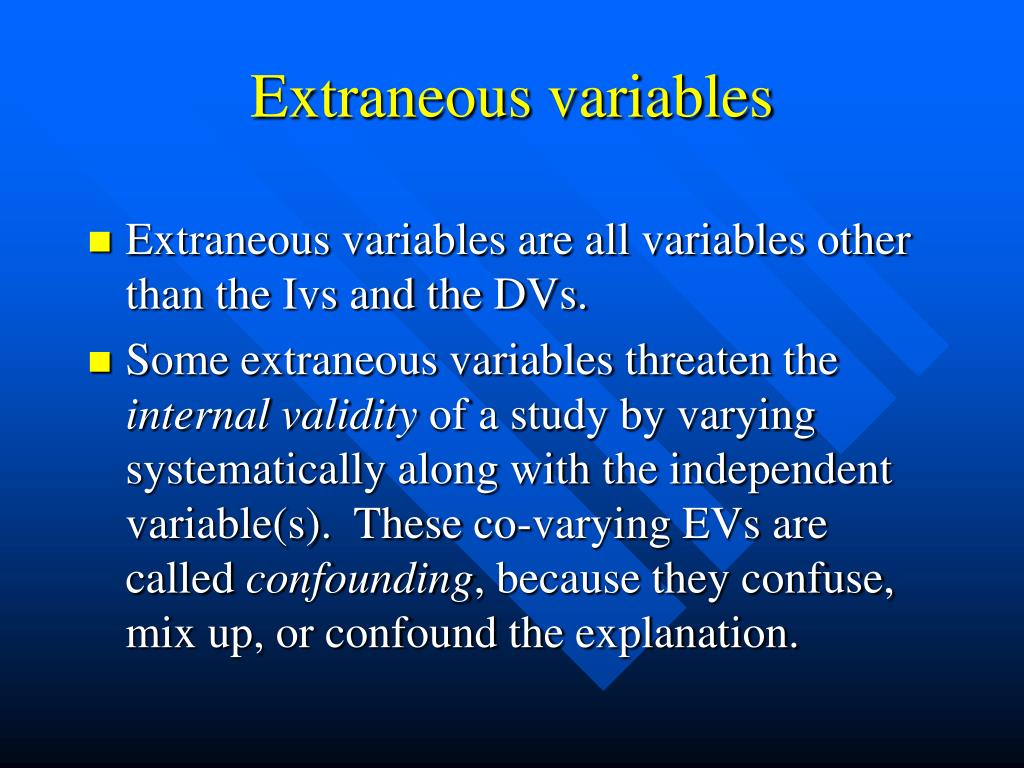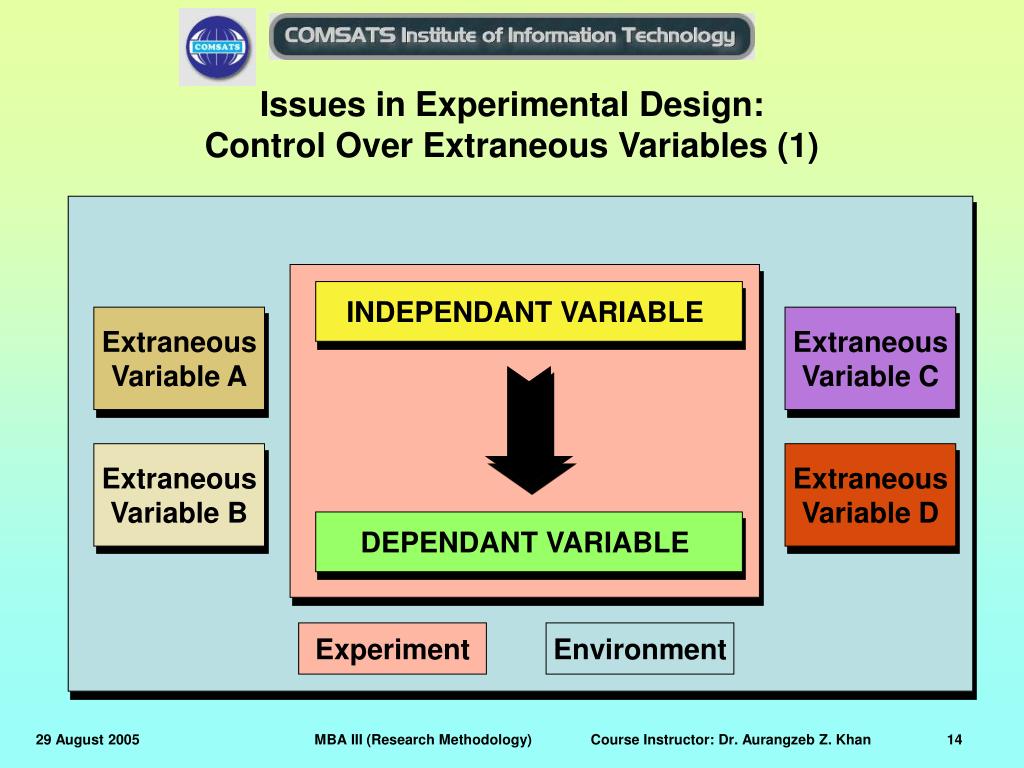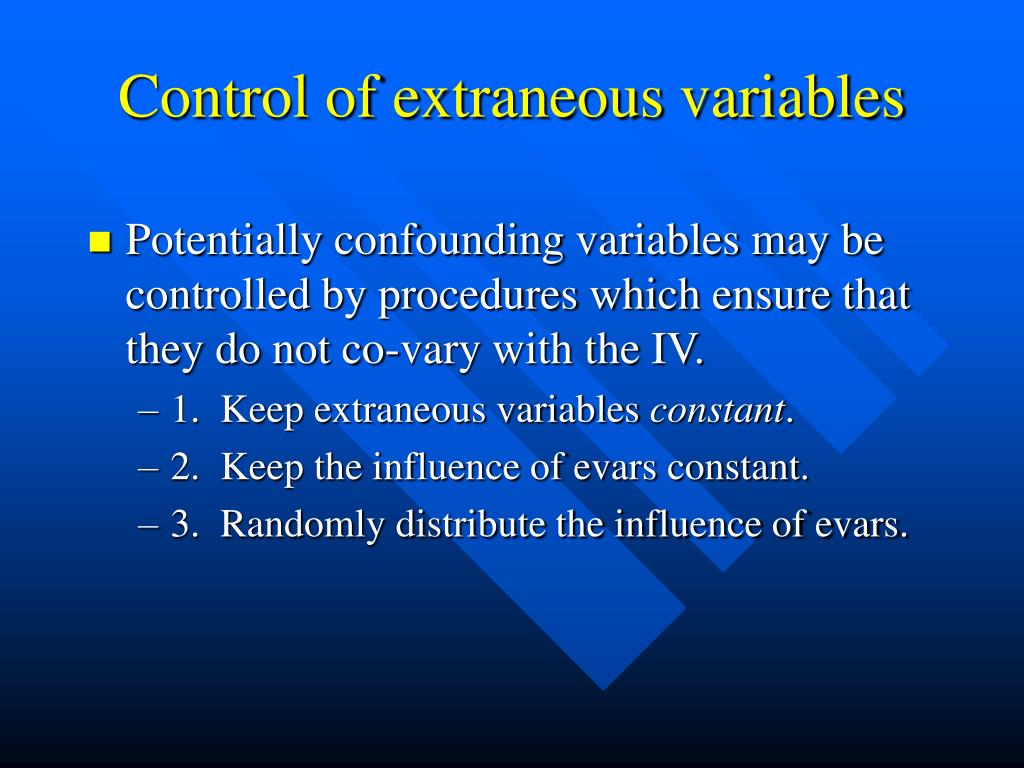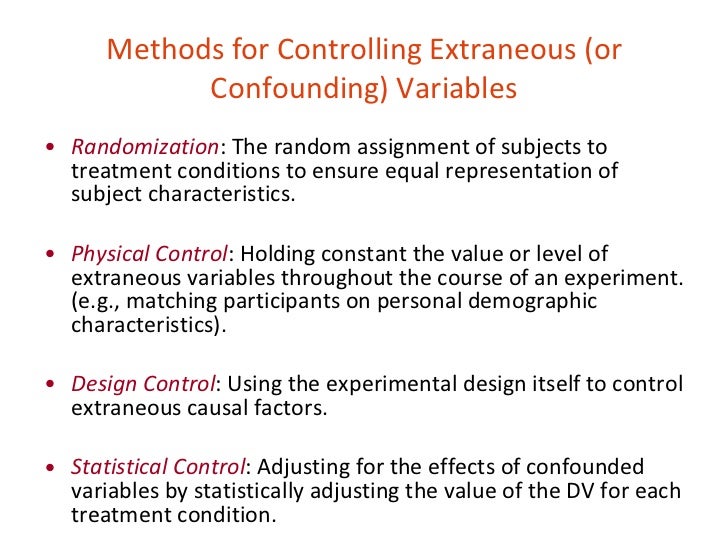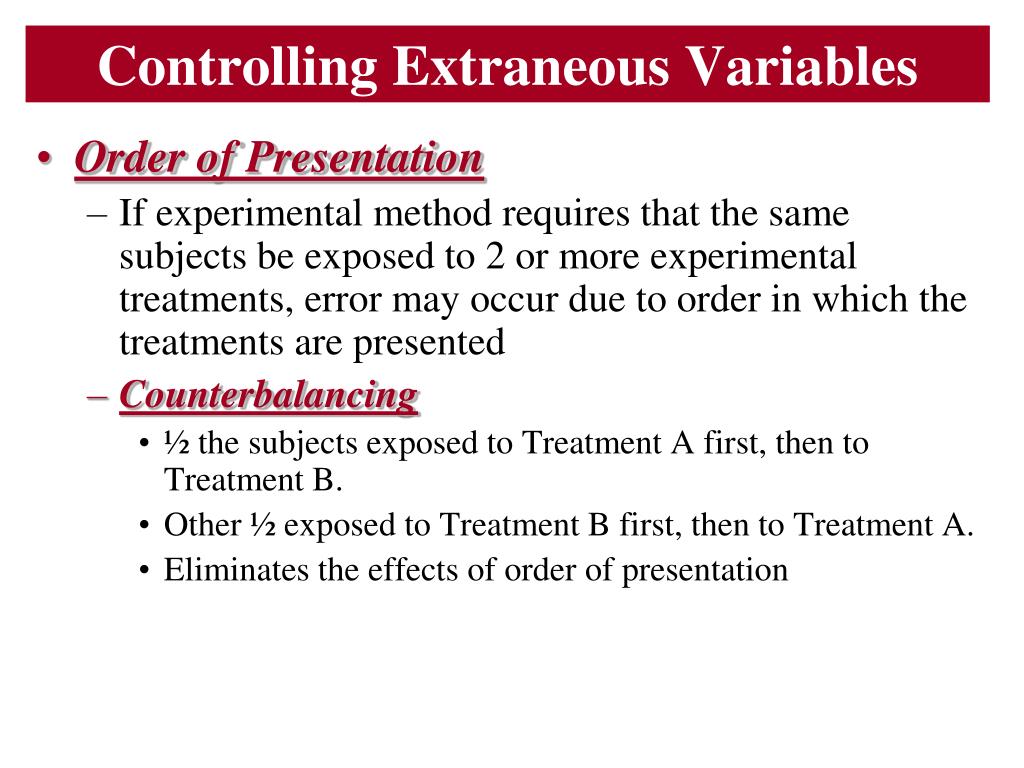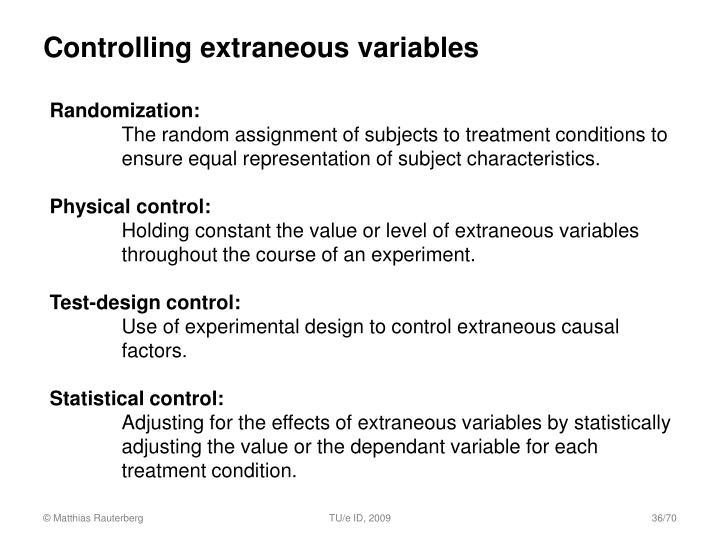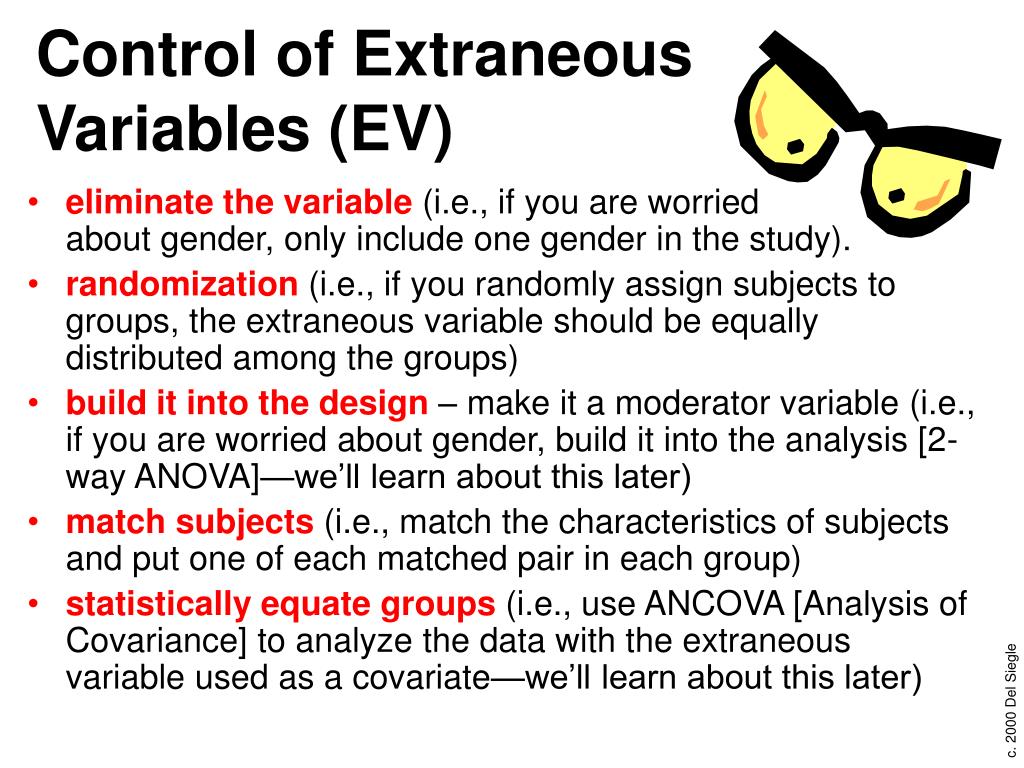Casual Info About How To Control Extraneous Variables

Randomizing participants helps remove the effect of extraneous variables (eg, age, injury history) and minimizes bias associated with treatment assignment.
How to control extraneous variables. One way to control extraneous variables is with random sampling. Statistical control of extraneous (i.e., third) variables is a common analytic tool among leadership researchers. A control variable is anything that is held constant or limited in a research study.
In the second step, the. How to control extraneous variables researchers that make the effort to control any external variables that they anticipate to see also expect more accurate. There are three key considerations to take when controlling extraneous variables:
While such a strategy is typically assumed to prove. Statistical adjustment can be broken down into two steps. Why do extraneous variables matter?
Statistically controlling for extraneous variables is an option for removing the influence of a variable on the study of program results. 10 types of variables in. Extraneous variables should be controlled where possible, as they might be important enough to provide alternative explanations for the effects.
Extraneous variables provide alternative explanations for test results. There are various ways to modify a study design to actively exclude or control confounding variables ( 3) including randomization, restriction and matching. How to control extraneous variable.
Here are some ways to control extraneous variables: Controlling for extraneous variables reduces its threats on the research design and gives us a better chance to claim the independent variable causes the. In the first step, the researcher selects some set of variables to adjust for.
When conducting an experiment, there are several factors that can affect the result especially. Extraneous variables can threaten the internal validityof your study by providing alternative explanations for your results.
Explain what an experiment is and recognize examples of studies that are experiments and studies that. Analyze with dovetail. It’s a variable that is not of interest to the study’s objectives, but is controlled.
Unlock the mystery of extraneous variables in research. Random sampling does not eliminate any extraneous variable, it only ensures it is equal between all. Because of this, they can.
Evaluation methods and approaches. Master techniques to control them and improve your study! You can measure and control for extraneous variables statistically to remove their effects on other variables.
